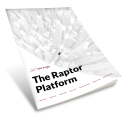“Safety first” is important for a production environment, and it holds especially true in the risky world of cybersecurity.
How does New Eagle prioritize keeping our clients safe from data breaches and cyberattacks?
We’ve rounded up answers to the top five questions our customers have about cybersecurity – and how we work to protect our customers in the digital realm.
1. What safety standards and cybersecurity protocols does New Eagle follow?
New Eagle is committed to industry standards and best practices for safety and security, and adheres to the International Organization for Standardization (IOS) standards for both safety and cybersecurity.
ISO 26262 provides a framework for functional safety in road vehicles that include one or more electrical and/or electronic (E/E) systems. These comprehensive guidelines cover concept, development, production, and operation phases.
ISO 21434 specifies engineering requirements for cybersecurity risk management. It applies to the full life of E/E systems in a road vehicle from concept, product development, production, operation, and maintenance through decommissioning.
Given how important these standards are, we ensure we build our solutions to enable compliance.
2. How does New Eagle support engineers with risk assessment throughout the process?
During the design process and throughout development, New Eagle supports engineers as they work to identify and mitigate ongoing risk. We meet and double-check all safety requirements using hazard analysis and risk assessment (HARA) for both software and hardware requirements.
HARA goes hand in hand with cybersecurity threat analysis and risk assessment (TARA), which pinpoints vulnerabilities before a cyberattack occurs. New Eagle helps companies review their TARA implementation to reduce those threats.
3. What sorts of validation and verification testing does New Eagle provide?
New Eagle validates each product internally. As defined by ISO 26262, we develop each product as a “Safety Element out of Context” (SEooC), whether it’s a software or hardware component, or a system, subsystem, or combination of systems.
This means the product is not designed in the context of a specific item or project. So while we always validate and verify the product at the internal level, it’s up to our customers to validate at the next level once it’s in context.
4. What kind of safety culture does New Eagle foster?
New Eagle views safety comprehensively – for our products and our people. We update our software regularly based on the National Institute of Security and Technology (NIST) list of secure crypto algorithms. In addition, we follow NIST’s Federal Information Processing Standard (FIPS) for security and interoperability.
New Eagle also emphasizes an internal safety culture for our employees. We’ve developed training programs, supported by management, for our teams in both functional safety and cybersecurity.
5. How do New Eagle products allow for collaboration?
Because our safety products are developed as SEooC, they plug and play with a variety of vehicle systems. While safety requirements fall under the purview of the vehicle manufacturer, users nevertheless must follow New Eagle’s safety guidance for our products. Our safety measures can’t be bypassed, ultimately making the final product safer.
Choose the right product for your cybersecurity needs.
New Eagle offers controllers that can be designed and customized for nearly any situation. Reach out to our sales team to ask about how our products can help you minimize your functional safety and cybersecurity risks.




